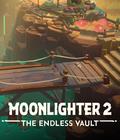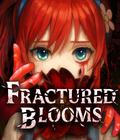Today, NVIDIA released our latest GeForce Game Ready Driver, which includes support for the new Half-Life 2 RTX Steam demo, inZOI, and Warhammer 40,000: Darktide’s DLSS 4 with Multi Frame Generation update.
There’s also support for Assassin’s Creed Shadows and The Last of Us Part II Remastered, with both featuring DLSS 4 with Multi Frame Generation (enabled via NVIDIA app overrides in Assassin’s Creed Shadows), DLSS Frame Generation, DLSS Super Resolution, and NVIDIA Reflex.
Here’s a look at the games our new Game Ready Driver supports:
- inZOI: KRAFTON's inZOI is one of the top 5 most wishlisted games on Steam, and launches into Early Access on March 28 00:00 UTC. inZOI players can transform the city's NPCs (Zois) into ACE autonomous game characters with higher levels of artificial intelligence by activating the "Smart Zoi" experimental feature setting. Enhanced Zois are designed to adapt and respond more realistically and intelligently to their environment based on their personalities. The NVIDIA ACE technology that powers Smart Zoi is a .5B billion parameter Mistral NeMo Minitron small language model. NVIDIA’s unique distillation methods provide high quality outputs at low latency in a very compact footprint, which is GPU-accelerated exclusively on GeForce RTX GPUs.
- Warhammer 40,000: Darktide: Warhammer 40,000: Darktide sends players into the depths of Tertium, an unforgiving hive city of the 41st millennium. Join strike teams of up to 4 players, grab your Warhammer 40,000 weapon of choice, and root out heretics attempting to gain control of the city. While this game featured support for DLSS Frame Generation, DLSS Super Resolution, and NVIDIA Reflex at launch in 2022, an update launching next week will upgrade its DLSS integration to DLSS 4. This will add DLSS Multi Frame Generation for GeForce RTX 50 Series gamers while updating DLSS Frame Generation and DLSS Super Resolution to the latest AI models, accelerating performance and further enhancing image quality.
- Control: Winner of over 80 awards, Remedy Entertainment’s Control is a visually stunning third-person action-adventure that will keep you on the edge of your seat. A recently released update further enhances Control and its technology, with the addition of a more recent version of DLSS that improves image quality, and enables NVIDIA app users to manually upgrade to DLSS 4’s transformer AI model, increasing detail, clarity, and image stability. Additionally, all resolutions are now supported when using DLSS, meaning film grain can once again be enabled alongside DLSS, HDR support is introduced and can be used concurrently with DLSS, shadows are improved when DLSS and ray tracing are enabled, texture fidelity is improved when using DLSS Performance mode, and DLAA is now available in-game. A new Ultra Ray Tracing preset has also been added that leverages the power of newer, faster GPUs to increase the number of rays per pixel, for improved image quality and temporal stability, texture quality enhancements, faster texture streaming, support for a wider range of ultrawide monitor aspect ratios, up to 48:9, the addition of an FOV slider, and the upgrade of SDR color from 8-bit to 10-bit to reduce color banding.
You can find a list of the 61 games and apps we’ve added or updated since our previous GeForce Game Ready Driver here, and you can download the new GeForce Game Ready 572.83 WHQL driver through the NVIDIA app, or from GeForce.com.
Half-Life 2 RTX Playable Demo Out Now, NVIDIA RTX Remix Officially Released With DLSS 4 & RTX Neural Shaders
Many classic PC games remain beloved for their unforgettable stories, characters, and gameplay. But as technology advances, their visuals struggle to keep up, making it harder for new generations to appreciate their original magic.
NVIDIA RTX Remix, a modding platform for RTX AI PCs, was built to change that. By reimagining the graphics of these timeless classics with cutting-edge ray tracing, we’re bridging the past and the future—allowing longtime fans to relive their favorite adventures in stunning detail, while introducing a new wave of players to the games that defined an era.
A year ago, we released NVIDIA RTX Remix in beta, empowering the modding community with a groundbreaking tool to modernize classic games, enhancing their visuals while preserving the core gameplay that makes them special. Since that initial RTX Remix release, over 30,000 modders have experimented with hundreds of classic titles, and over 1 million gamers have played RTX Remix mods.
Today, we’ve officially released RTX Remix, exiting beta with a host of new capabilities including DLSS 4 with Multi Frame Generation, cutting edge RTX Neural Rendering technologies, AI-powered tools, and many community-requested changes that will enable modders to improve their remasters, increase image quality, and further accelerate performance.
To demonstrate RTX Remix’s capabilities, Half-Life 2 owners can now download a free Half-Life 2 RTX demo from Steam, showcasing Orbifold Studios’ work in Ravenholm and Nova Prospekt, ahead of the full game’s release at a later date.
Remaster Classic Games With RTX Remix
RTX Remix differs from other modding tools in that it opens up a large catalog of hundreds of classic games to be graphically remastered.
As a modder plays through a classic game with RTX Remix hooked up, textures, models, lighting, effects, and more can all be captured, categorized, and reassembled into an editable scene. Through an easily mastered interface, the RTX Remix application lets modders drag and drop lights, move objects, copy-paste existing objects into a scene to increase clutter and grass coverage, convert lights to be fully ray-traced, AI enhance textures, and add DLSS to improve image quality and accelerate performance.
Community mod teams like Orbifold Studios who wish to go one step further can rebuild every asset with AAA-fidelity, employing state of the art PBR-based workflows to make highly detailed meshes with realistic material properties, in place of the low resolution, low poly originals.
And because RTX Remix runs on the highly flexible OpenUSD file format, mod artists can use practically any digital content creation tool of their choosing, whether it be Blender, Adobe Substance 3D Painter, or Autodesk Maya to modify or rebuild original game assets.
When the modder exports their mod, it comes packaged with the RTX Remix Runtime. The player need only launch the original game, and the RTX Remix Runtime will replace the original renderer with a modern Vulkan one unencumbered by the limitations of the original game engine, replacing each original asset and light with the remastered version live at playback.
If you want to learn more, head to our original RTX Remix announcement article, which walks you through the capabilities of the modding tool.
RTX Remix Neural Rendering Upgrades: DLSS 4 With Multi Frame Generation & Neural Shaders
Alongside the recent release of our GeForce RTX 50 Series GPUs, powered by the Blackwell architecture, we also launched DLSS 4 with Multi Frame Generation and our new RTX Neural Shader technologies.
The new version of Remix adds support for the complete suite of DLSS 4 technologies, and introduces the first Neural Shader in games with RTX Neural Radiance Cache, which improves indirect lighting and performance.
DLSS 4 With Multi Frame Generation
The AI-powered performance-accelerating technology GeForce RTX gamers know and love took another leap forward with the launch of DLSS 4 earlier this year.
DLSS 4 in RTX Remix enhances DLSS Ray Reconstruction, and DLSS Frame Generation, and introduces DLSS Multi Frame Generation, multiplying frame rates versus traditional brute force rendering when used in concert with the other features.
In the Half-Life 2 RTX demo, DLSS 4 with Multi Frame Generation multiplies performance by 10.2X on average at 4K, using the Ultra Preset, enabling 265 FPS, high refresh rate 4K gaming on the GeForce RTX 5090:
https://youtu.be/Nfa0G2AO2fI
On GeForce RTX 40 Series GPUs, DLSS Frame Generation runs faster and uses less video memory.
And on all GeForce RTX GPUs, the new transformer AI model enhances the image quality of DLSS Ray Reconstruction, further improving your experience
Neural Radiance Cache
Our first publicly released neural shader, Neural Radiance Cache, enhances the quality of fully ray-traced indirect lighting, whilst simultaneously improving performance. The Neural Radiance Cache uses a grid of AI neural networks across screen and world space that trains on a player’s real-time game data to calculate indirect light for the scene. Training in real-time, it’s highly tailored to the specific game content being played during that session. The result is more accurate and responsive lighting that runs up to 15% faster in Half-Life 2 RTX.
Performance Optimizations
We’ve also made other performance improvements to our renderer. The RTX Remix runtime re-renders a classic game, replacing assets at playback while injecting RTX technologies, such as full ray tracing and DLSS 4 with Multi Frame Generation.
With our newly optimized RTX Remix Runtime, expect performance improvements up to 15%, depending on the game.
Enhanced Texture Streaming
Gamers have come to expect rapid loading and smooth navigation from modern games. NVIDIA RTX IO accelerates texture decompression and reduces download sizes (the Half-Life 2 RTX demo is 20% smaller, and loads faster thanks to it). But even with RTX IO, Remix mods could still overuse video memory, causing momentary slowdowns and stutters.
A new texture streaming system more efficiently uses video memory, dynamically adjusting texture quality without exceeding the total amount available, maximizing texture quality in mods with very high-res assets.
Working in concert, RTX IO and the new texture streamer ensure assets load quickly and look amazing.
New RTX Remix Tools Help Modders Create Even More Stunning Characters and Worlds
The RTX Remix official release includes massive improvements for how modders can author content and push the bar for graphics mods. With RTX Remix, modders will now be able to replace characters, ground them in realism with RTX Skin, and improve the atmosphere and lighting in their mods with RTX Volumetrics. There have also been a number of enhancements to the RTX Remix Toolkit, including a new powerful Stage Manager. Let’s take a look.
Enhanced Character Creation
In games supporting GPU skinning, character, enemy, and NPC models can now be replaced, just like assets and world materials. In the Half-Life 2 RTX demo, Ravenholm zombies were remade in Blender with 30 times more polygonal detail before being imported into RTX Remix, replacing the original 2004 model, without adjusting game code or logic. Once imported, the new “Skeletal Remapper” allows modders to define how their newly rigged mesh should map to the skeleton of the original asset. And once bones and joints have been remapped, the new character replacement will animate perfectly
RTX Skin & Subsurface Scattering
NVIDIA RTX Skin is one of the first implementations of sub-surface scattering in ray-traced gaming. For the first time, light reflects, penetrates, and propagates realistically through skin, on a per-pixel basis, grounding characters with a level of realism unattainable with rasterization, previous approximated subsurface scattering techniques, and previous ray tracing techniques. Furthermore, artists can tune how much the light should scatter or transmit through materials, adjusting the subtlety and intensity of the effect.
Additionally, RTX Subsurface Scattering can also be applied to thick, semi-opaque materials like candle wax, marble, and jade, enabling developers to create breathtaking scenes and more realistic worlds. Here’s a demonstration of a test asset, a marble figurine, staged in Half-Life 2 RTX.
RTX Volumetrics
Volumetric effects add light shafts and god rays to games, and allow particle and weather effects to be illuminated. NVIDIA RTX Volumetrics enable RTX Remix modders to create incredible volumetric, particle and atmospheric effects.
Rasterized volumetric effects require multiple, performance-intensive high quality shadow maps for each light in a scene to prevent noticeable aliasing, flickering, and artifacting. Full ray tracing removes the reliance on rasterized techniques, such as shadow maps, enabling higher quality implementations that have a fixed cost regardless of the number of lights in a scene.
RTX Volumetrics adds a volume-based Reservoir-based Spatiotemporal Importance Resampling (ReSTIR) algorithm that allows for higher contrast volumetric light and shadows, improving volumetric quality. Modders will notice much sharper and well defined shafts of light and volumetric beams, with crisp volumetric shadows, which can create stunning gameplay moments.
In RTX Remix, modders can replace old unlit fog with a new atmospheric system that offers high customizability. Modders can modify heterogeneous density of the atmosphere, add and simulate particles which are also lit with raytracing and adjust volumetric anisotropy (i.e. define how light should scatter depending on the viewing angle relative to the light) to increase the ambience, realism and immersion of their mods. RTX Remix offers several presets to change the atmosphere of your mod on the fly– for example, you can add heavy fog, light fog, mist, haze, and smoke, and allow the user complete customization of the physical properties if desired.
Modders can even add dust that suspends in the air, and define its density, weight, and color for dramatic effect.
And of course, modders can dive in and tweak every parameter individually to their hearts content to get whatever atmosphere they are looking for.
Material Enhancements
Parallax Occlusion Mapping (POM) adds the appearance of depth to a surface, such as a cobblestone street. It is vitally important in classic games, which can often feature many flat surfaces. Before now, RTX Remix used an “inward displacement” approach to POM, where edges of a material were pulled into negative space to create the illusion of 3D.
Now, modders can use “outward displacement” as well to create even more believable depth. A wall with chipped paint for example no longer requires the entire wall to bend into negative space just to show a small outward bump–with outward displacement, a more stable appearance of depth can be maintained with less visual artifacting.
Creator Toolkit Enhancements & New Features
Along with a variety of workflow optimizations to make modding faster and easier, we’ve added the most requested feature: the RTX Remix Stage Manager.
From this new control panel, modders can view a complete list of all tweakable game elements, jumping directly to them with a click. Sort and find prims, lights, meshes, materials, skeletons, and more, isolate remastered and original assets, and create custom searchable tags for any asset, making future locating and editing easier.
Updated Documentation & Tutorials Available Now
For the rundown on every change in NVIDIA RTX Remix 1.0, head here.
For tutorials walking you through the first steps on your modding journey, check out our YouTube playlist.
For extended documentation about all things Remix, read the online manual.
And for further assistance, head to the community-led RTX Remix Showcase Discord server, where you can also showcase your mods, and download the latest mods from others.
Half-Life 2 RTX Demo Available Now
Half-Life 2 RTX is a community-made remaster of Valve’s classic game, made by Orbifold Studios. With a mission to remaster the entirety of Half-Life 2, Orbifold is updating every texture, model, and level, adding extra geometric detail to buildings and surfaces to realistically interact with fully ray-traced lighting. Even particles and animations are being revitalized to bring Half-Life 2 to modern graphical standards
To ensure the tone and feel of Half-Life 2 is retained, while enabling remastered assets to look realistic in fully ray-traced environments, the entire game has also been relit, replacing twenty-year old tech with today’s cutting edge lighting through RTX Remix. Essentially, Orbifold is remaking the entirety of Half-Life 2 graphics, while leaving its beloved gameplay untouched.
Textures are remade by artists with height maps and physically-based materials, models are remade from scratch, levels are upgraded in the Hammer editor, and everything’s imported back into RTX Remix to be lit, enhanced by NVIDIA RTX technology, and packaged as a standalone game that will be available for free on Steam for owners of Half-Life 2.
Now, you can get a preview of the team’s work by downloading the newly-released Half-Life 2 RTX demo, featuring levels from Ravenholm and Nova Prospekt. If you don’t own Half-Life 2, it’s available with an 80% discount in the Steam Spring Sale until March 20th.
Every aspect of each level has been upgraded, though the work isn’t final, and further tweaks and tech upgrades are planned for launch. Weapons, enemies, and skyboxes have all been remade, atmospheric effects added, visual effects enhanced, and audio updated.
And every technology mentioned earlier is included. DLSS 4 with Multi Frame Generation multiplies frame rates by up to 10X at 4K. DLSS Super Resolution and DLSS Ray Reconstruction look even better thanks to a new transformer AI model. Neural Radiance Cache further accelerates ray-traced lighting. RTX Skin enhances Father Grigori, headcrabs, and zombies. RTX Volumetrics add realistic smoke effects and fog. And everything interplays and interacts with the fully ray-traced lighting.
To play at the level of detail shown in the screenshots and videos seen in this article, we recommend a GeForce RTX 50 Series graphics card, though there are plenty of settings available to ensure a great experience on previous-generation GPUs, too.
On GeForce RTX 50 Series GPUs, DLSS 4 with Multi Frame Generation multiplies frame rates by 10X on average at 4K, using the Ultra Preset, enabling smooth, beautiful gameplay.
At 2560x1440, a 7.1X average multiplier allows GeForce RTX 50 Series gamers to play at up to 350 frames per second. And at 1920x1080, a 5.7X average multiplier sees performance surpass 400 frames per second.
Press Alt+X in-game to open the RTX Remix settings menu, where you can quickly switch between a number of graphics and DLSS presets. The minimum required GPU for the demo is a GeForce RTX 3060 Ti.
To help you get the best experience on your system, check out the charts below for our settings recommendations and adjust in-game via Alt+X.
NVIDIA RTX Remix & Half-Life 2 RTX Demo Available Now
To make your own RTX Mods, download NVIDIA RTX Remix from the Home screen of NVIDIA app, or from our website. And grab the Half-Life 2 RTX demo from Steam.
NVIDIA RTX Remix requires a GeForce RTX GPU to create RTX Remix Mods, while mods and games built using Remix are compatible with any hardware that can run Vulkan ray-traced games. To find RTX Remix mods to download and play, we recommend ModDB and the RTX Remix Showcase Discord server.








